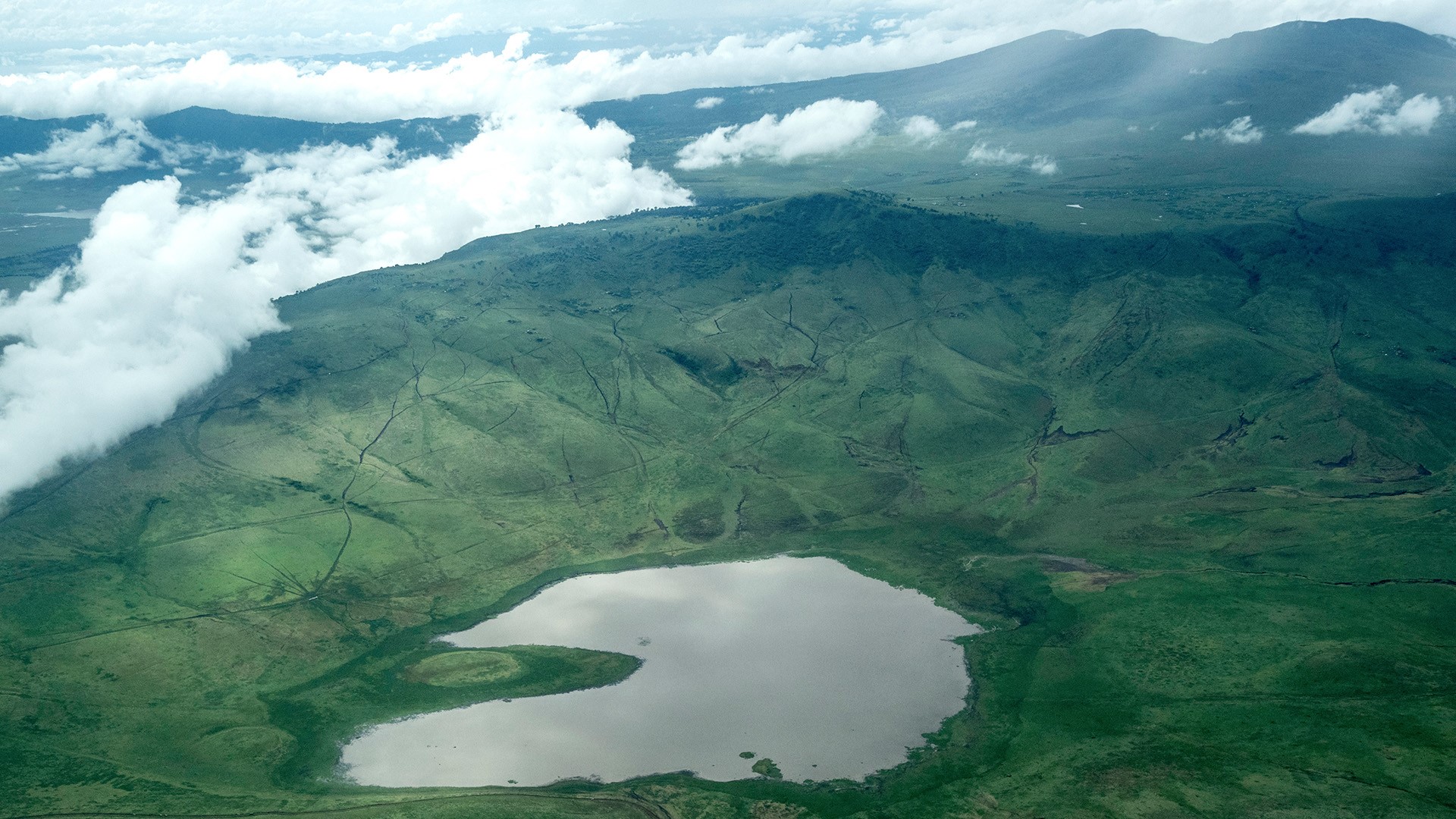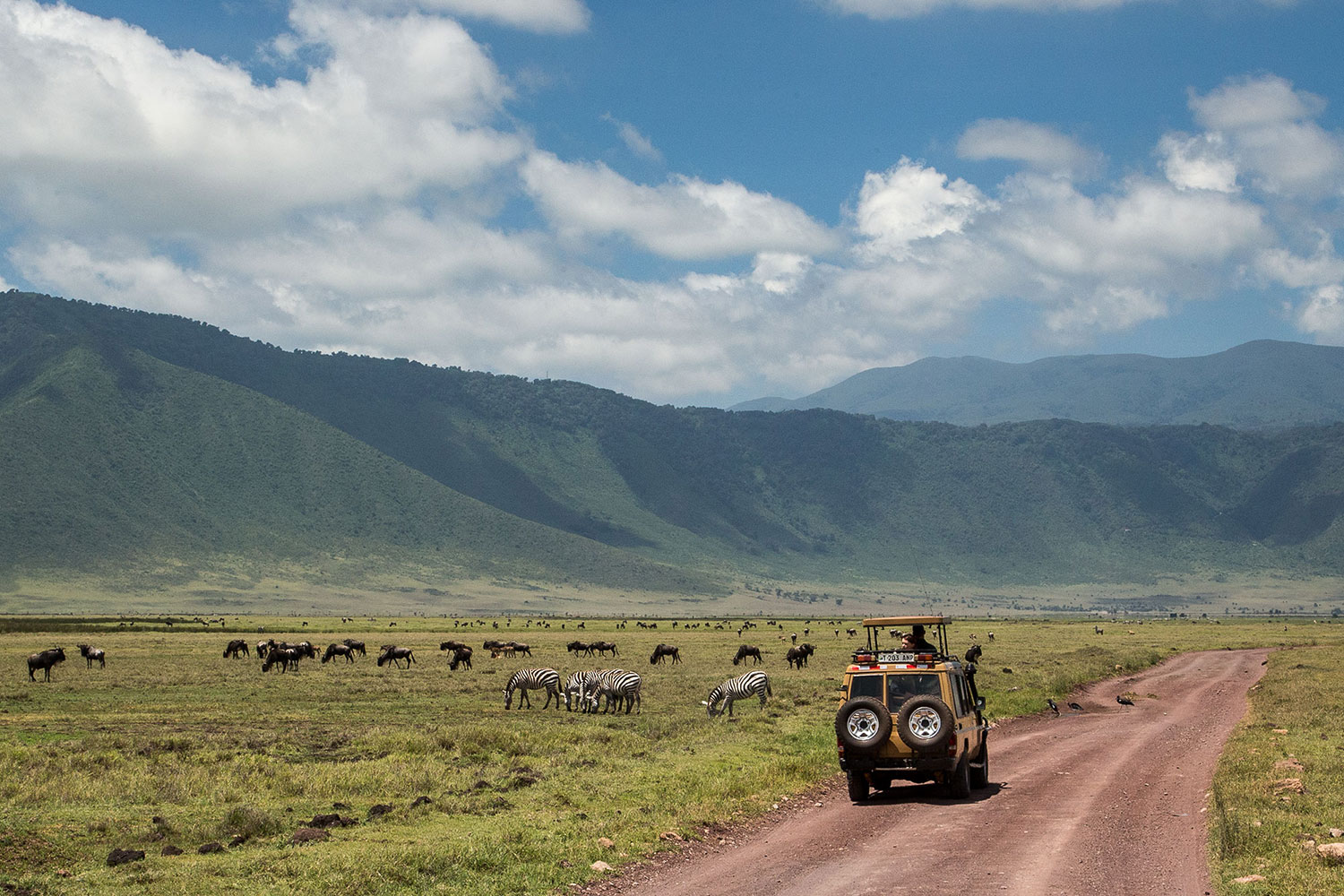NGORONGORO CONSERVATION AREA
A UNESCO protected World Heritage Site and an International Biosphere Reserve, the Ngorongoro Conservation Area is situated some 190 km. west of Arusha, between Lake Manyara and Serengeti National Parks. Covering approximately 8,292 square km, the Ngorongoro Conservation Area consists of the Ngorongoro Crater itself, the Olduvai Gorge and Ndutu, the Empakai crater and the Oldonyo Lengai Mountain. The Ngorongoro Conservation Area is a pioneering experiment in multi-purpose land use where people (the Maasai), their livestock and wildlife coexist and share the same protected habitat. Wild animals are protected as in the National Parks.
Natural wonder Ngorongoro Crater
The famous Ngorongoro Crater is the main feature of this area. Two to three million years ago the large volcano exploded and collapsed on itself. As a result the crater formed which then created a unique ecosystem with a wide variety of vegetation.Today the crater is home to the highest concentration of wildlife in Africa. It is home to zebras, buffaloes, warthogs, baboons, elephants, flamingos, ostriches and hippos. You can find a high population of predators, including lions, hyenas, jackals, cheetahs and leopards. And a big attraction of the Ngorongoro Crater are of course the Big Five – buffalo, elephant, leopard, lion, rhino. You can see them all in this 20 kilometres (12,5 miles) wide and 600 metres (2,000 feet) deep crater. Enjoy the variety of animals and beautiful colours of the landscapes. The views from the crater rim over the crater floor are incredible. Because of its natural beauty, the crater is chosen as one of Africa’s Seven Natural Wonders The craters of Ngorongoro and Empakai are reserved exclusively for wildlife, while the rest of the Conservation Area is shared by wildlife, people and livestock. The Maasai, the main residents of Ngorongoro, are pastoralists who move widely with their herds of cattle, sheep, goat and donkeys in search of pasture and water. In recent years the Maasai have been encouraged to work on the land and supplement their traditional diet of milk and meat.
The Ngorongoro Crater, which is the central attraction in the area, is the largest Caldera in the world that has its walls intact. The Ngorongoro Crater floor, a sheer drop of 610 metres below the crater rim, has an area of 304 sq. km, with a diameter of 19 km. The sight of the Ngorongoro Crater is simply stunning. “It is impossible to give a fair description of the size and beauty of the Crater, for there is nothing with which one can compare it. It is one of the Wonders of the World…” once wrote Professor Bernhard Grzimek. The crater floor is home to tens of thousands of plains animals, including wildebeest, zebra, gazelles, elands, and a large predator population of lions, hyena and jackal which can all be viewed at close quarters. The rare black rhino can be viewed here, and if you are lucky you can see cheetah and leopard. The rainy season is between November and May. The altitude at the crater rim is about 2286 metres above sea level, and temperatures can get quite chilly in the evening, especially between May to September.
NDUTU
Ndutu is located in the Ngorongoro Conservation Area, in the southeastern plains of the Serengeti ecosystem. The plains around Ndutu are the main holding ground for migratory animals where vast herds congregate and linger for more than four months, from December to April, before they start moving across the Serengeti in search of greener pastures and water. Ndutu area forms an important part of the Serengeti ecosystem, in particular the short grass plains which provide calving grounds for wildebeest and other migratory animals.
Maasai tribe
During your safari it is also possible to visit the Maasai tribe. They are allowed to let their livestock graze in this area. If you really want to learn more about the lifestyle and rituals of this fascinating tribe, we recommend you to book a Maasai Tour.
You like to incorporate Ngorongoro Crater into your itinerary? Check our Tanzania safaris for inspiration or contact us for a personal advice.
Most common animals in the Ngorongoro Conservation Area
- Rhinos
- Hippos
- Lions
- Grant Gazelles
- Thomson Gazelles
- Zebras
- Wildebeests
- Warthogs
- Highland Antelopes
- Elephants
- Jackals
- Ostriches
- Ngorongoro krater Tanzania
Ngorongoro facts
- Ngorongoro crater floor with its unique habitat and wildlife
- Ngorongoro Highlands
- Olmoti Crater and Empakaai Crater
- Tropical rainforest
- Olduvai George, earliest place of human existence on earth.
- Museum Laetoli Footprint, has oldest known footprints of early humans.
Excursions and activities in Ngorongoro Conservation Area
- Mountainbike tour Lake Manyara
- Visit Maasai village
- Visit Hadzabe tribe
- Cultural tour Mto wa Mbu


